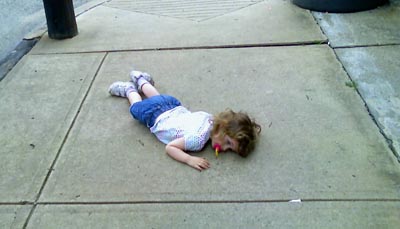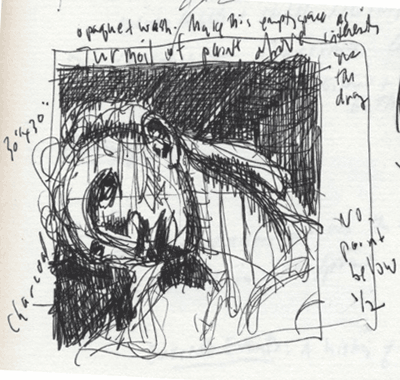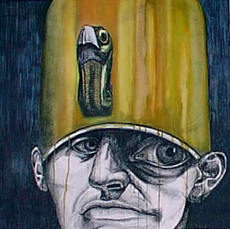One of the many reasons I'm fond of
printmaking is that a skillful printmaker is someone who has mastered a bunch of really antique technology. The equipment and techniques used by printmakers were once the "state of the art" methods for reproducing images. As each method of creating multiples was replaced by something more efficient and cost-effective (I'm not saying "better" here!), it was left to the artists to celebrate whatever unique qualities were found in the images made by the now obsolete technology. Which is why we're still making relief prints. Liberated from commercial considerations, the medium could be explored solely for its beauty. So, with this in mind, I was wondering why our collective handwriting has gotten so crappy?

Regardless of the gravity of the situation, I could never have signed the Declaration of Independence with the flourish of Benjamin Franklin, much less Mr. Hancock himself. And looking through any stack of old postcards, I'm frequently impressed by the quality of the handwriting. These aren't "calligraphers" - these are people who have trained their hands to do something that most people don't do anymore. . .

The obvious place to look is probably the tool. All of those variations in line width are only possible with a chiseled nib. But I think that the training of the hand was even more important. The fountain pen required a care and deliberation to use that became unnecessary when the disposable pen, with quick-drying ink, was introduced. It's strange to think that our hands can have become so much more clumsy, at least in this one area, because of the introduction of a more efficient tool.

So that got me thinking about other things we don't do anymore. And one of them is draw. Is drawing an antique technology? By this I mean, has drawing lost its utilitarian function, and become something used solely for its intrinsic visual qualities? This lovely little drawing by Frank Lloyd Wright was the best way to visualize his plans for those pieces of furniture at the time - drawing was the way you got from idea to object for the architect. I was reminiscing about my undergraduate days, when the art studio was right next door to the architecture school. Those architecture students were some of the hardest working folks on campus, and they were frequently up all night drawing. I wonder if their all-nighters are now spent in front of a computer screen?
So here's my question, prompted by discussions on
Steven LaRose's and
Mary Addison Hackett's blogs: How does the gradual disappearance of the utilitarian functions of drawing affect the way we see artist's drawings? As drawing plays less and less of a role in advertising, architecture, technical illustration, medical illustration, and the like, does the viewer lose the sense of what is typical of competent drawing, and thus have a skewed sense of what the artist is attempting in his or her work? If an artist creates a skillful rendering from direct observation, does the element of craft involved overshadow whatever peculiar qualities unique to that artist's vision are on display?
I'm not questioning what I still believe to be the enormous value of drawing in the training of an artist, or as part of an artist's practice, or the quality of artist's work that is drawing-based. I'm just wondering if the diminishment of drawing as a practical skill in the commercial world creates a different experience for the viewer. And, on top of that, does growing up in a world where drawing seems like an exotic practice of an eccentric few affect the future artist?
Is drawing antique technology?















